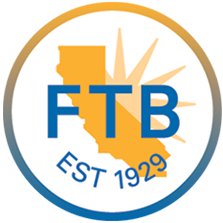Form 1041 Schedule D
Excise Tax Forms
Employment Tax Forms
Information Returns
Extension Forms
FinCEN BOIR
General
Introduction
Schedule D (Form 1041) is used by estates and trusts to report capital gains and losses. This form is an essential part of Form 1041, the U.S. Income Tax Return for Estates and Trusts, and helps the IRS assess the tax liabilities associated with the sale or exchange of capital assets.
When an estate or trust has unrelated business taxable income (UBTI), as reported on Form 990-T, any capital gains or losses must be accounted for to determine the total taxable income. Schedule D provides the necessary details on capital gains and losses, which are then included in the calculation of UBTI on Form 990-T.
In this resource guide, we will learn about the key aspects of Schedule D (Form 1041), from its purpose to filing requirements and commonly asked questions.
Table of Contents
What is Schedule D (Form 1041)?
Schedule D (Form 1041) is a supplemental form that estates and trusts use to detail their capital gains and losses from transactions involving capital assets. The form requires a breakdown of each transaction, including the description of the asset, date of acquisition, date of sale, sales price, and cost or other basis.
These assets can include stocks, bonds, real estate, and other investment holdings. The schedule separates transactions into short-term (held for one year or less) and long-term (held for more than one year) categories, ultimately calculating the net capital gain or loss for each.
Embark on a Smooth Schedule D Filing Journey with TaxZerone
Complete your Schedule D filing requirements with ease!
Who must file Schedule D (Form 1041)?
Any estate or trust that has realized capital gains or losses from the sale or exchange of capital assets during the tax year must file Schedule D (Form 1041) along with Form 990-T return
This includes:
- Estates with income from the sale or exchange of capital assets.
- Trusts that have realized capital gains or losses from investments.
- Any estate or trust with capital gain distributions from mutual funds or other regulated investment companies.
Choose TaxZerone to complete your Schedule D (Form 1041) filing
Navigating tax complexities for filing Schedule D (Form 1041) can be challenging, but TaxZerone makes it simple and stress-free.
As an IRS-authorized e-file service provider, TaxZerone offers a user-friendly platform that guides you through the e-filing process, providing instant updates on your return status.
Here's what sets TaxZerone apart:
- Simplified Interface : Our user-friendly platform makes filing a breeze, even for those unfamiliar with tax forms.
- Confidence Through Accuracy : TaxZerone helps you avoid errors by providing clear instructions and error checks, ensuring accurate reporting, and minimizing potential tax issues.
Even if the IRS rejects your return, you can correct and retransmit it at no additional cost.
Here’s how your Form 990-T return with Schedule D attachment is transmitted to the IRS - just 3 simple steps!
- Provide Organization Details - Choose the tax year for which you want to file a return, and provide your organization's details.
- Preview Schedule A - Attach Schedule D to report capital gains and losses and preview the information provided in the return for accuracy before transmitting.
- Transmit to the IRS - Transmit Schedule D along with your 990-T Return to the IRS and get the acceptance in just a few hours.
Streamline Your 990-T Filing with TaxZerone!
Make your e-filing process simple by clicking the button below.
E-File Form 990-TCommonly Asked Questions
1. What information do I need to complete Schedule D?
2. Can estates and trusts offset capital gains with capital losses?
Yes, estates and trusts can offset capital gains with capital losses. If capital losses exceed capital gains, the excess loss can be carried forward to future tax years.




